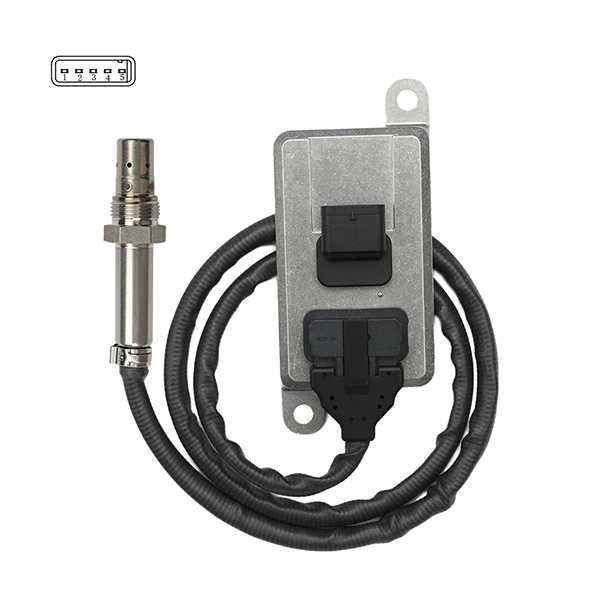Core Functions of a NOx Sensor
2025-07-08
Nitrogen oxides (NOx), primarily nitric oxide (NO) and nitrogen dioxide (NO₂), are harmful pollutants produced during high-temperature combustion processes, such as those in internal combustion engines. To comply with stringent emissions regulations and improve engine efficiency, modern vehicles and industrial systems increasingly rely on NOx sensors. These sensors play a critical role in monitoring and controlling NOx emissions in real-time. This essay outlines the core functions of NOx sensors and their significance in environmental protection and engine performance.
1. Real-Time Monitoring of NOx Concentration
The primary function of a NOx sensor is to measure the concentration of nitrogen oxides in the exhaust gases. These sensors detect NO and NO₂ separately or as a combined value, depending on the sensor type. Typically installed in the exhaust system, the sensor provides continuous feedback on NOx levels, enabling onboard diagnostic systems or external controllers to make informed decisions for emission control.
2. Support for Exhaust After-Treatment Systems
NOx sensors are essential components of selective catalytic reduction (SCR) systems, which reduce NOx to harmless nitrogen and water using a urea-based reducing agent (DEF/AdBlue). The sensor measures NOx levels before and after the SCR catalyst to assess system efficiency and adjust the injection rate of the reductant accordingly. This ensures optimal conversion rates and compliance with emission standards.

3. Enhancing Engine Performance and Fuel Efficiency
By providing accurate emissions data, NOx sensors help optimize the air-fuel mixture and combustion timing. This information allows the engine control unit (ECU) to adjust parameters dynamically for maximum efficiency while minimizing NOx production. For lean-burn diesel engines in particular, which operate under oxygen-rich conditions, the NOx sensor enables fine-tuned control strategies.
4. Onboard Diagnostics and Regulatory Compliance
NOx sensors support onboard diagnostics (OBD) by detecting malfunctions in the emission control system, such as SCR inefficiency, catalyst degradation, or sensor faults. Fault codes triggered by NOx sensor readings inform vehicle operators and technicians of issues requiring maintenance. This function is vital for compliance with environmental regulations such as Euro 6 and EPA Tier standards.
5. Contribution to Environmental Protection
By enabling precise control of NOx emissions, these sensors contribute directly to reducing air pollution and protecting public health. NOx gases contribute to the formation of smog, acid rain, and respiratory problems. Thus, NOx sensors are indispensable tools in efforts to mitigate the environmental impact of combustion-based technologies.
Conclusion
NOx sensors serve as critical components in modern emission control systems. Their core functions include real-time monitoring of NOx levels, supporting after-treatment technologies, enhancing engine performance, enabling diagnostics, and contributing to environmental protection. As emission standards become more stringent and public concern over air quality rises, the role of NOx sensors will remain central to sustainable transportation and industrial practices.
As a professional manufacturer and supplier, we provide high-quality products. If you are interested in our products or have any questions, please feel free to contact us.